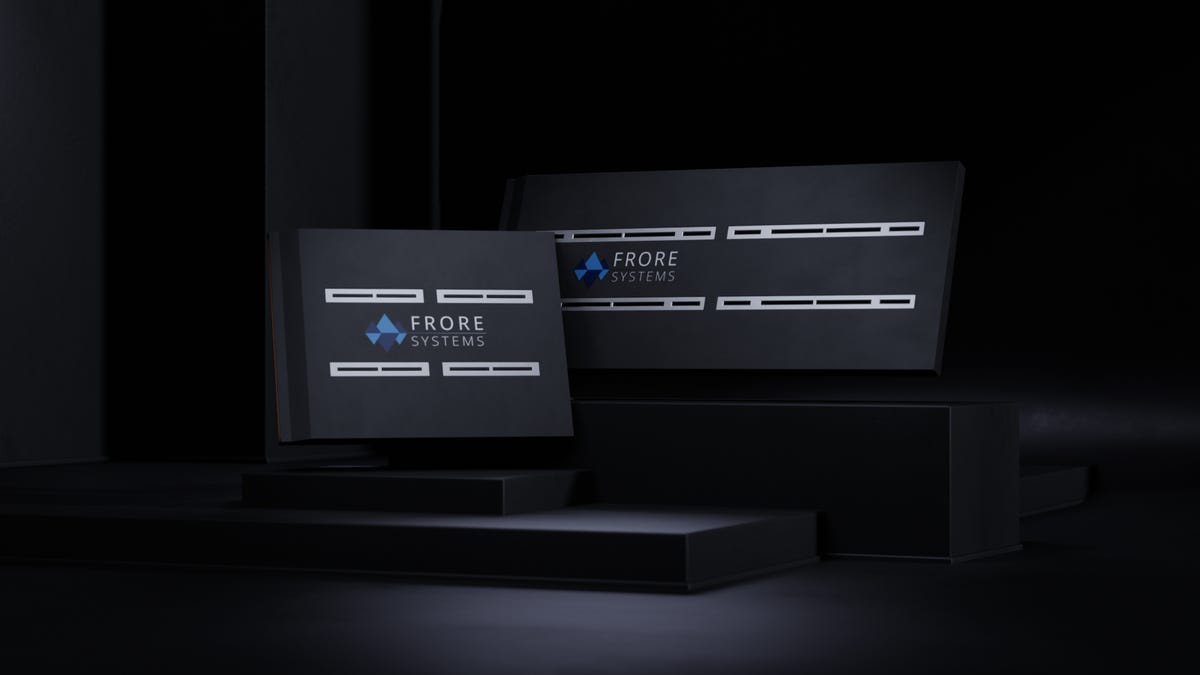A New Fanless Cooling 'Chip' Could Lead to Quieter, Higher-Performing Laptops
The new AirJet is a cooling module that's thinner and more efficient than computer fans.

The AirJet is a quieter, more efficient cooling solution than fans.
Using your laptop for heavy-performance tasks has its downsides, including loud fans, throttled speeds and warm cases that are uncomfortable to rest on your lap. But a new alternative to fan cooling could radically reduce these pain points and lead to thinner, more efficient laptops.
The new solution, called the AirJet, is a rectangular module half the size of a stick of RAM that sits on top of the CPU to cool it. The first generation of AirJets is designed to cool down laptops, tablets and mobile gaming consoles, but later versions could be small enough to use in smartphones and VR headsets, or efficient enough to use in data centers, according to AirJet manufacturer Frore Systems.
But first, AirJet will help manufacturers retain thin laptop size without sacrificing performance to keep overheating down.
"For fanless notebook capability, the bar is going to be much higher as a result of embracing AirJet," said Seshu Madhavapeddy, co-founder and CEO of Frore Systems.
The AirJet, as seen from the side: Air gets sucked in from the top by vibrating membranes, then speeds along the bottom where it takes heat from the processor and is blown out the side.
Though they use airflow for cooling like computer fans that use rotating blades, AirJets use vibrating membranes to suck in air through slits in the top -- a technique called jet impingement that's used to cool aircraft jet engines. Air travels along its bottom edge, which is in contact with the processor and draws heat away from it, after which the hot air blows out the side of the laptop. This also makes them different from vapor chambers used in high-end gaming phones, which don't expel the hot air but let heat radiate into the outer layers of the phone.
The 2.8mm thick AirJets are thinner than the average 5mm computer fan, take up half the space and are quieter to boot. They also draw in air at 10 times the pressure of your average fan (1,750 pascals versus 140 pascals), meaning there wouldn't be the need for nearly as many of those air intake vents scattered over the bottom of today's laptops.
"Even though [a fan] might actually be able to produce a lot of airflow out in the open, when you put it in a constrained space, because of the low pressure the amount of flow they actually generate drops like a rock," said Madhavapeddy. "In our case, there is no effect at all. We get the same airflow."
In addition to taking up less space than fans, Frore says, the AirJets do such a better job of managing heat that computers don't need to throttle their performance to avoid overheating. For example, a 13-inch Arm laptop may have a maximum clock speed of 3.5 GHz but when pushed will throttle that down to 1.8 GHz to conserve heat -- but replace the fan with a quartet of AirJets and the computer's speed doesn't need to drop.
Frore calls its AirJets "chips" though they don't have any processing power. Instead, they're using chip fabrication methods to build AirJets and plan to release new versions annually. Frore is debuting two AirJet models in its first generation: the AirJet Mini, a little smaller than a business card and intended for tablets and casual laptops, and the larger AirJet Pro for performance laptops.
The AirJets are designed to be used together according to a manufacturer's needs: Four of the Mini units could cool that 13-inch Arm laptop, a trio of Pro units could cool a higher-performance 15-inch laptop, according to Frore's examples.
The first generation of AirJets have limits. While three or four could cool your average laptop which might need 28W of heat removed, they can't quite handle gaming laptops with standalone GPUs that need cooling solutions to deal with up to 100W of heat, Madhavapeddy noted. Future AirJet generations might be able to handle laptops on the extreme end of performance, but the current Mini and Pro are meant to help designers make thin laptops even thinner.
Frore hasn't announced prices for the AirJet Mini or AirJet Pro (just that they will be "competitive based on performance"), though they'll be available in the first quarter of next year. Frore also didn't name any products that will use AirJets, though Madhavapeddy said that the company is integrating them into platforms launching in 2023 from "[companies] that you will recognize easily." He also noted that Frore partnered with both Qualcomm and Intel through the AirJet's development, and have been working to integrate the cooling solution into the Intel Evo platform.

